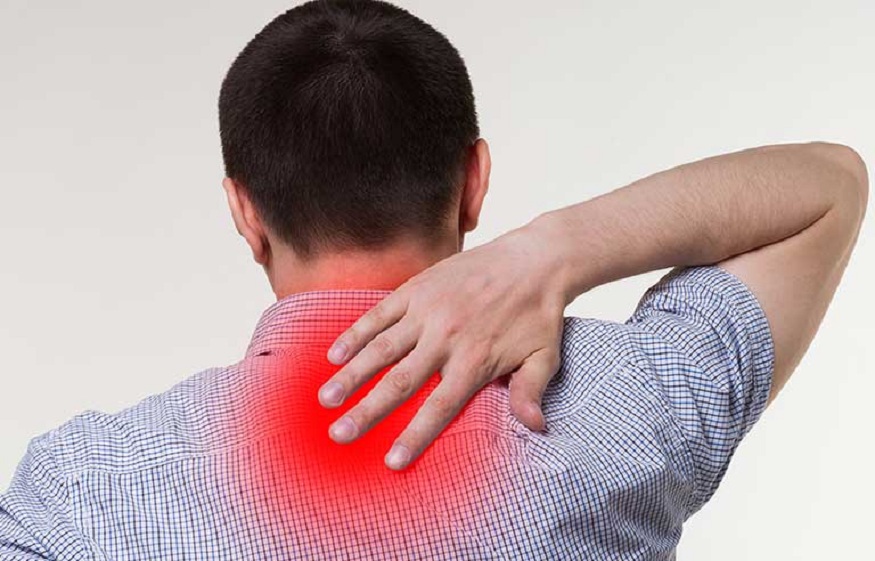Left flank pain can have multiple causes: digestive, muscular, renal or other. Learn about the diagnosis and treatment for each.
Summary
Digestive pain
Referred pain
Parietal and muscle pain
Other possible causes
Renal colic and renal pathology
Gynecological pain
Digestive pain
Pain located in the left part of the abdomen, whether in the hypochondrium, the flank or the iliac fossa, is not uncommon. What are the different possible causes? The explanations of Dr Thierry Higuero, gastroenterologist doctor in Nice and Monaco.
Acute or chronic, the pain felt in the left side of the body can be of various origins. If some pains are directly of digestive origin, others can come from other causes.
Digestive pain
A frequent cause of localized pain in the left iliac fossa can be linked to a simple functional disorder related to the filling of the colon. ” Stressing the sigmoid colon, the left side of the colon, can lead to pain that will be relieved naturally at the time of defecation ,” says Dr. Higuero. This type of pain often affects people prone to irritable bowel syndrome. In case of constipation, a prescription for laxatives can be useful.
Diverticulitis is an acute pain, linked to an inflammation , even to the infection of a diverticulum of the sigmoid colon yet cause pain on the left. This type of pain can be considered the equivalent of appendicitis, but on the left. There are four stages of severity ranging from localized infection to peritonitis of the entire abdominal cavity. In case of suspicion of diverticular sigmoiditis, a blood test (with complete blood count, CRP and creatinine assay) as well as an abdominal and pelvic CT scan with injection of contrast product should be prescribed. “The management of this pathology gives rise to two frequent errors: the systematic prescription of antibiotics and that of a seed-free diet (that is to say without kiwis or strawberries, for example) “, adds the specialist.
In the absence of emergency surgical indication, the treatment combines antispasmodics and a residue-free diet for one to two weeks. “If necessary, depending on the terrain and context, antibiotic treatment may be prescribed for 6 to 7 days,” continues the doctor.
Rarer, omental appendagitis is necrosis of a fatty fringe of the omentum, the fat located around the intestine. From time to time, this fat can twist on itself and, thus blocking the arrival of blood, become necrotic. It is a very sharp and localized pain. The recommended treatment generally consists of a prescription of non-steroidal anti-inflammatory drugs.
Colon cancer can cause pain on the left, unlike polyps which are painless. ” A tumor mass can cause, depending on its size, a dull pain that can go as far as an intestinal obstruction “, explains the gastroenterologist.
Referred pain
Some pain felt in the left side of the stomach can come from other organs or body areas, such as the dorsal spine. This is called “referred pain”. Several causes, in particular rheumatological, can be at the origin. ” Nerve roots that exit from either side of the spinal cord all the way up the spine run forward to innervate the thorax, abdomen, pelvis and lower limbs. If, for a reason or another, a left thoracic root is irritated, this can cause pain in the left side of the body , “explains the doctor.
Minor intervertebral disturbances (when a vertebra “moves” between two others, in a way) can also cause pain felt in the left side.
Starting from the spine, these pains will be felt “in” the stomach, sometimes very acutely. For this type of diagnosis, I refer the patient to a rheumatologist or an osteopath ,” notes Dr. Higuero.
See also
Swollen eyelid: what are the possible causes?
Article
Swollen eyelid: what are the possible causes?
left ventricle
Article
left ventricle
Parietal and muscle pain
Parietal and muscle pain are among the possible causes of pain felt on the left side. These are relatively common and represent 10 to 15% of abdominal pain. Among them, parietal pain due to an impingement of the anterior branch of an abdominal cutaneous nerve is not uncommon. Irritation of this part of the nerve that passes through the abdominal fat can cause sharp pain there. This is an elective pain, that is to say localized to a specific area. It is a problem related to the abdominal wall and not the viscera, easily highlighted by the increase in pain on pressure with a finger on the painful area during contraction of the abdominals (Carnett’s sign). “This type of pain can disappear spontaneously or can be treated by simple infiltration. Similar pain can of course occur on the right side ,” says Dr. Higuero.
Myofascial syndromes refer to muscle contractures. At the level of the abdomen, they can concern the psoas (the walking muscle), the transverse and oblique abdominals. These contractures can be linked to a spinal static disorder, poor posture or even consecutive to sports practice and can cause pain in the left flank. ” When they concern the psoas muscle , it is however necessary to eliminate a suffering of a viscus in its contact (ovary, intestine or appendix)
A Spiegel’s hernia (or lateral ventral hernia) located in the abdominal wall (called Spiegel’s line) below the umbilicus, on the left (or right) can also cause pain.
Renal colic and renal pathology
Renal colic results in a violent pain that starts from the lumbar fossae (back) to move forward and down (towards the iliac fossa) along the ureter, the channel that carries urine from the kidneys to the bladder. Kidney cancer will also cause pain, but these will be more located in the lumbar fossae.



